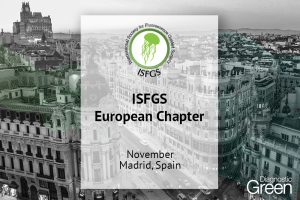Purpose: Evaluation of diagnostic value for lymph node metastasis and lymph node identification using Indocyanine Green (ICG) fluorescence in laparoscopic subtotal gastrectomy for gastric cancer.
Methods: A prospective study on 79 patients who underwent radical subtotal gastrectomy with the use of ICG-guided lymph node dissection. The sensitivity and specificity of the ICG fluorescence lymphography method in detecting metastatic lymph nodes were evaluated.
Results: A total of 79 patients underwent surgery. The number of lymph nodes (LNs) were retrieved: 2.992 LNs, of which 2.392 were fluorescent (79.9%) and 600 were non-fluorescent (20.1%). The average number of lymph nodes dissected was 37.7 ± 11.8 LNs, and the average number of fluorescent lymph nodes was 30.3 ± 11.1; the LN metastasis rate in the total lymph nodes and in the ICG group were 6.79% and 7.34%, respectively. The median number of retrieved LNs in patients with LN metastases [32 (IQR 26-44)] was higher than in patients without LN metastases [26 (IQR 21-36)], (p=0.348). The median number of fluorescent LNs was significantly higher in patients with LN metastases [32 (IQR 26-44)] than in those without LN metastases [26 (IQR 21-36); p<0.001]. The sensitivity of ICG in metastasis detection was 75.86% (22 out of 29 patients), with a false-negative (FN) rate of 24.14% (7 out of 29 patients). For the identification of metastatic LNs, the sensitivity of ICG was 90.7%, with the specificity of 20.8%. The negative predictive value of non-fluorescent LNs was 97%.
Conclusion: ICG fluorescence lymphography-guided lymphadenectomy can clearly visualize the lymphatic system and the lymph nodes alongside the tumor. The high sensitivity in detecting metastatic lymph nodes and the high negative predictive value of a non-fluorescent lymph nodes suggest that this is an effective method for clinically radical gastrectomy for gastric cancer.




